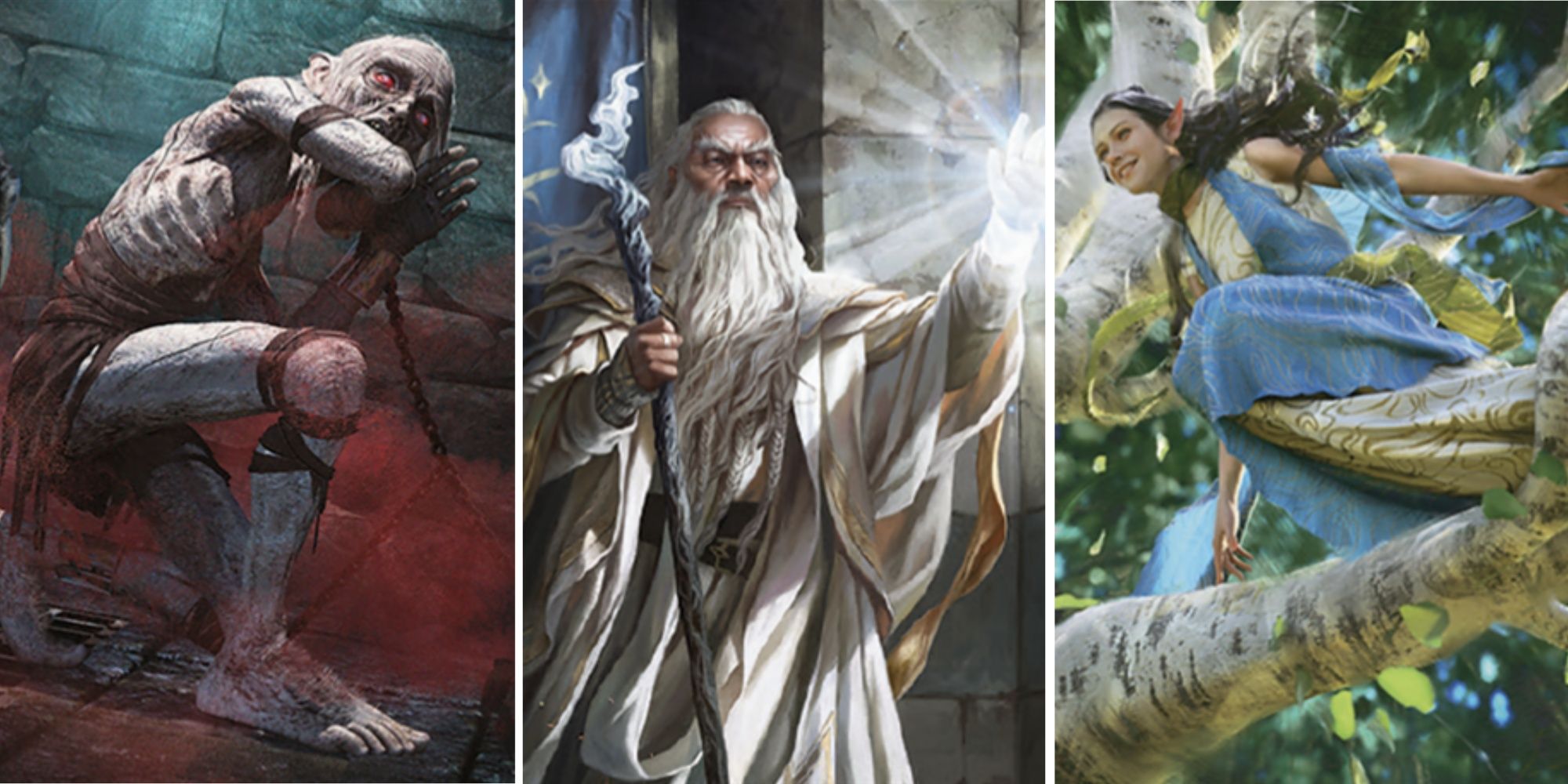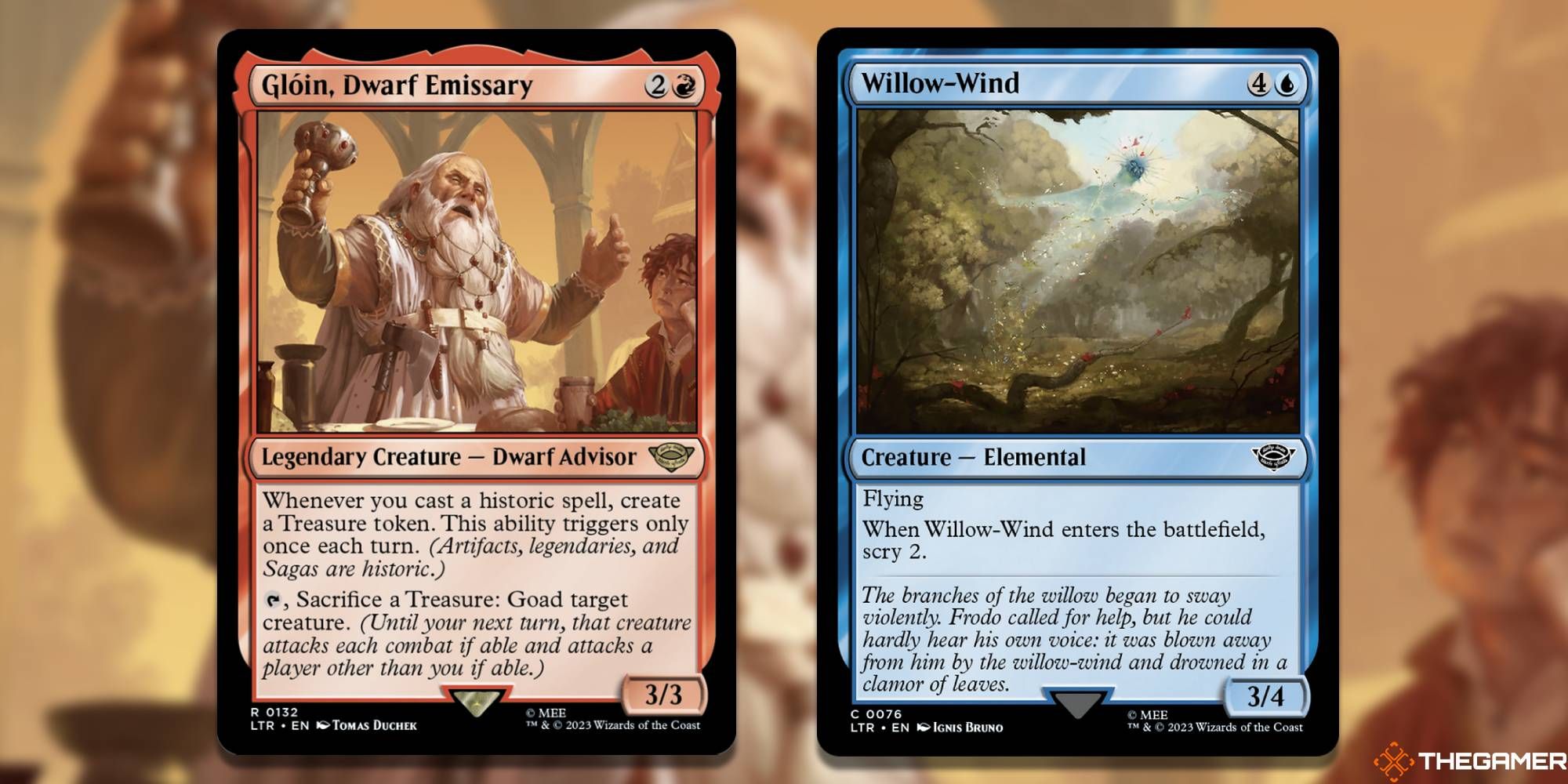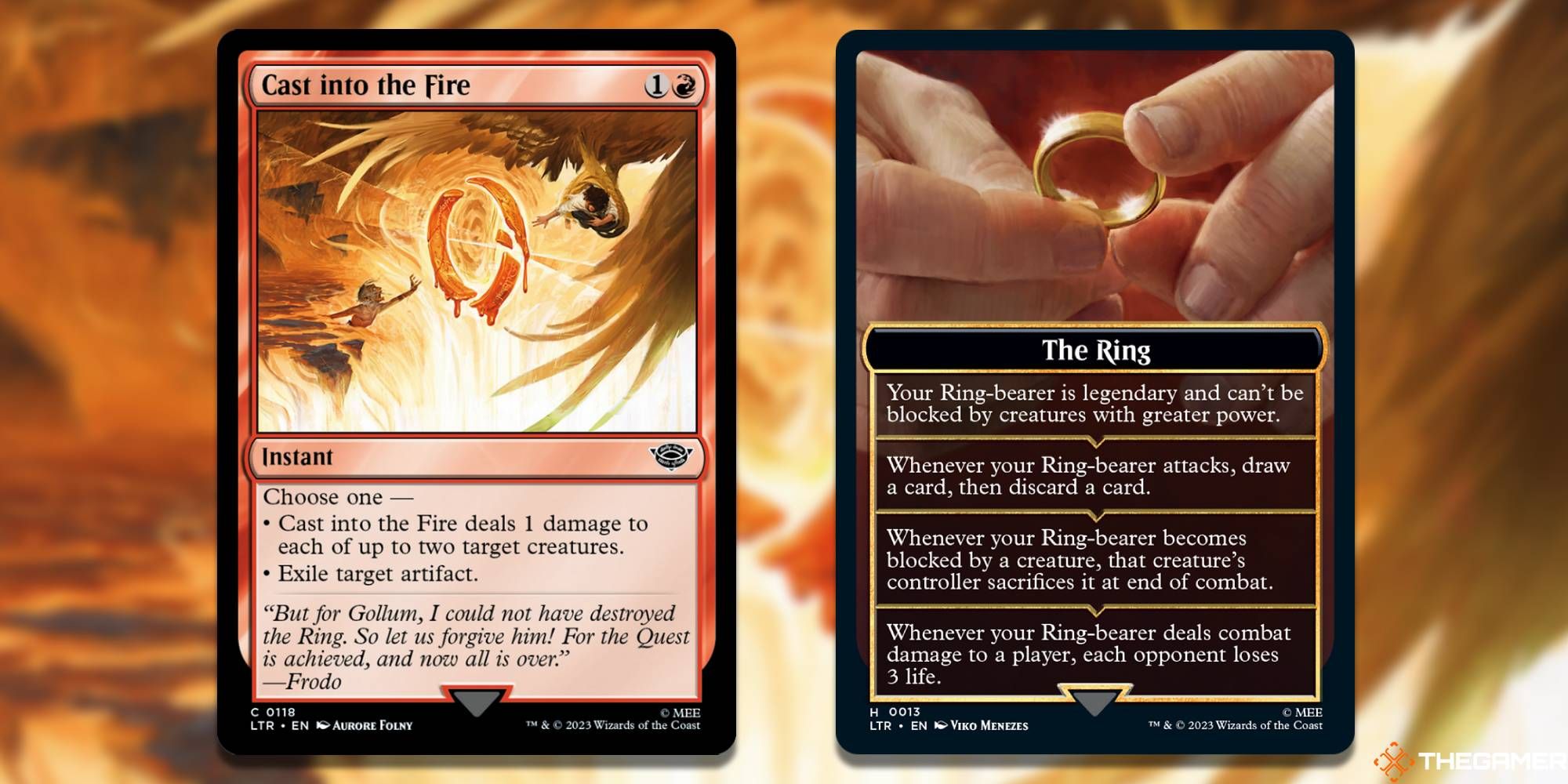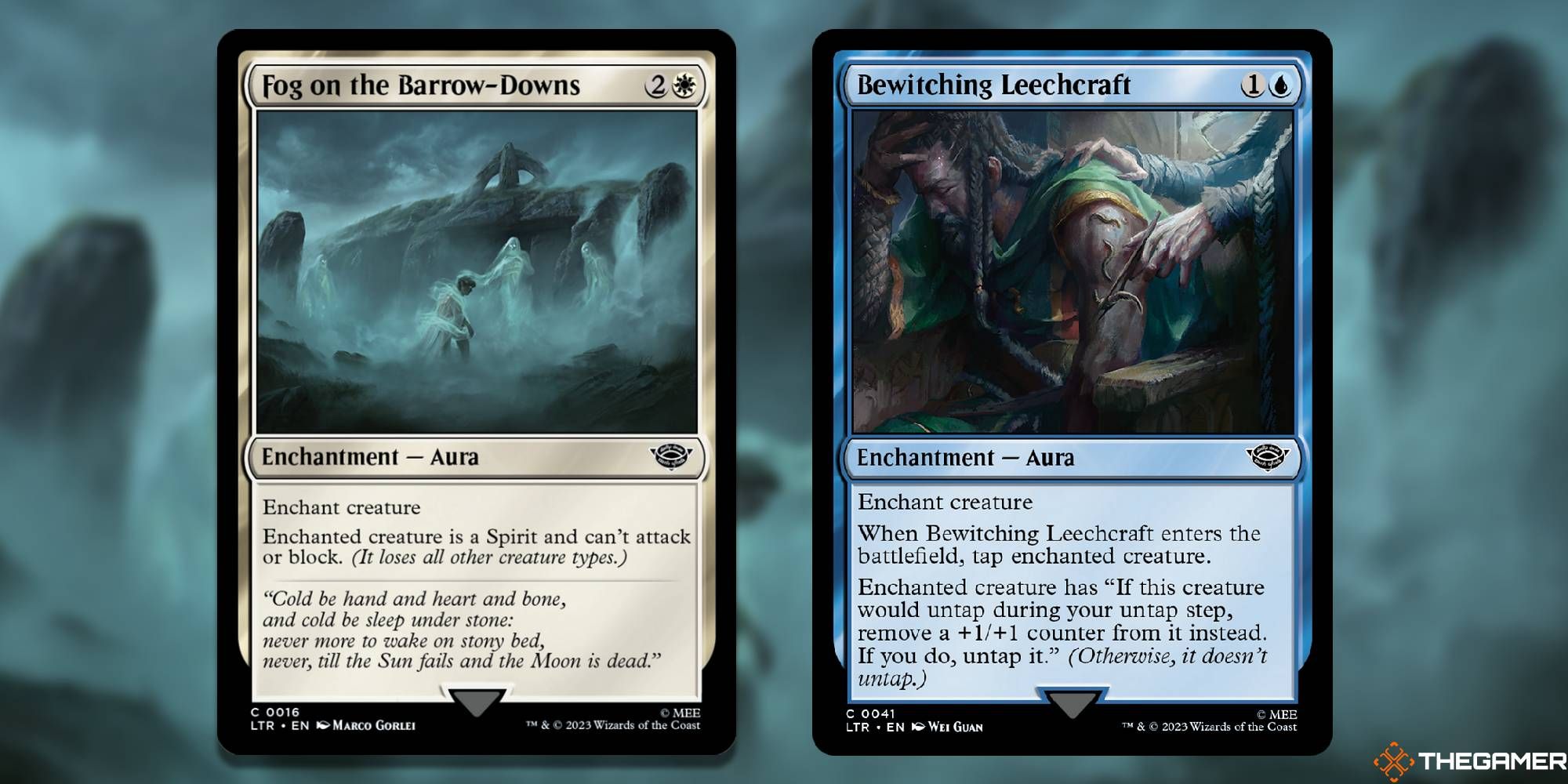Of all the properties and fantasy settings that have influenced the evolution of Magic: The Gathering, The Lord of the Rings has to be number one. So when it comes to cross-overs in the Universes Beyond line-up, Tales of Middle-earth just made sense. The set was a resounding success in terms of translating everything people love about Tolkien's works into the 2.5in x 3.5in world of paper Magic, and the accompanying draft format ended up having plenty to offer.
From simple game mechanics to brief card text, Lord of the Rings (LTR) gave many players an early 'Core Set' vibe, and the pronounced color disparity lead to some hyperbolic discourse about the longevity of the draft environment. Despite some initial backlash, LTR delivered a top-notch draft format, with plenty of note-worthy lessons worth carrying over into future Limited sets.
10 Well-Supported Doesn't Always Mean Good
Coming into the format, green decks like Blue/Green scry and Green/White Food looked well-supported and competitive in the format. The decks certainly existed, and were even somewhat easy to assemble. Unfortunately, the best versions were still worse than the average blue/black/red Grixis-spectrum competitor.
These synergy decks ended up leaning too heavily on frail creatures. Arwen Undomiel was the centerpiece of the scry deck, but a 2/2 can only do so much in a world with high-tier common removal spells. Food decks had notable support with Butterbur, Bree Innkeeper, Peregrine Took, and others, but removal also picked this deck apart.
9 1-Mana Landcycling Is Excellent
The cycling mechanic's been through quite a journey. Cheap cyclers were a profound feature of Ikoria, March of the Machine's landcyclers fell short, and Lord of the Rings' are seeing extensive play in Eternal formats. It seems that landcycling for a single generic mana makes almost anything playable, even unexciting creatures like Oliphaunt and Eagles of the North.
They smooth out the early game while giving you reasonable late game plays without pushing other expensive cards out of your deck. They even have various micro-synergies, like how Shadowfax can put Eagles into play, or how they make for easy reanimation targets with Tale of Tinuviel.
8 Cantrips With Upside Are Valuable
Birthday Escape is blue cantripping at its finest. Cards like Opt and Consider are always baseline playable and sometimes excellent depending on the themes of the format, but Birthday Escape's upside propelled it to the best blue common in LTR.
Most tempt cards compromised power or efficiency to include the bonus text, but Escape was a relatively risk-free way to get The Ring rolling. Even outside 'turbo-tempting' decks it was a low opportunity cost card that effortlessly enabled spell payoffs like Fiery Inscription and Gandalf's Sanctions, some of the best build-arounds in the set.
7 A Format Can Be Unbalanced, But Still Fun
Black was easily the superior color in LTR, while green trailed behind by a huge margin. The color disparities were obvious, but the gap in power between the best and worst colors didn't stop the format from having a diverse collection of competitive archetypes.
It took a while for green to settle as a base for 5-color legends, which added another deck to the pile of fun and interesting archetypes. In-pod play did accentuate the color imbalances, since this forced lesser green decks to square off against the generically powerful decks more often.
6 The Vanilla Test Needs To Be Revamped
The 'vanilla test' suggests creatures need to meet a certain power/toughness to mana cost ratio to be worth running. Traditionally, square stats like 2-mana 2/2s, 3-mana 3/3s, and so on have been good baselines for Limited creatures, but that hasn't necessarily held up.
LTR had no shortage of 4-mana 4/4's that just weren't worth playing. Despite having fine stat-lines, cards like Gloin, Dwarf Emissary and Willow-Wind lagged behind because their abilities just weren't necessary. This is off the back of multiple formats where on-rate creatures weren't priorities unless they had synergistic abilities or relevant creature types.
5 Universes Beyond Is Here To Stay, And That's Alright
Tales of Middle-earth was Magic's first foray into a fully draftable Universes Beyond IP, following the Dungeons & Dragons crossover sets that served as a precursor to it. Those sets are largely considered lackluster or even bad depending on who you ask, but they, along with LTR, accomplish one major goal: bringing a well-known IP to Magic in a way that still feels like Magic.
LTR felt like a faithful retelling of the beloved stories through familiar mechanics and flavorful card designs. This set, along with the Warhammer 40K Commander decks, have set expectations for future Universes Beyond crossovers, especially in draftable environments.
4 Looting Makes Situational Cards Better
Level four of The Ring emblem was worth working towards, but the second level was arguably more important on a game-by-game basis. Being able to reliably loot each turn meant you could always find action in the late game and avoid flooding.
Easily-accessible looting meant some situational cards got a chance to see play, relevant given the popularity of Best-of-1 Limited on Arena. Cards like The Black Breath and Cast into the Fire are occasionally powerful, but you can be more comfortable main-decking them knowing you can loot them away when they're bad.
3 Creature-Based Discard Is Premium
The Torment of Gollum was an exceptionally potent form of disruption in this set, stripping away your opponent's best card while building up your board. It's only one instance of cards like this being great in Limited.
The closest comparison is Toll of the Invasion, a similar design that was equally important in War of the Spark. Cheap hand disruption creatures like Virus Beetle, Burglar Rat and Nezumi Informant have all been decent to great role-players in various formats as well. This type of card should be higher on players' radars moving forward.
2 Aura-Based Removal Needs Help
Fog on the Barrow-Downs, Bewitching Leechcraft and Morgul Knife-Wound were all noticeably weak, and only made the cut when you couldn't find better removal. This is only one of many sets where aura-based removal has been at its worst.
Maybe it's the frequency at which sacrifice themes or blink effects creep into sets, but 'Pacifisms' play out like temporary solutions rather than consistent removal, and they're poor answers to utility creatures. You could trump these auras with Nasty End, Slip on the Ring, etc., and they lined up poorly against great rares like Orcish Bowmasters and Radagast the Brown.
1 Reading The Card Does Not Explain The Card Anymore
'Reading the card explains the card' sounds intuitive, but it's meant as a tongue-in-cheek response to players asking how a card or ability works. It might be time to retire that joke though, since it's not really true anymore.
The Ring emblem and ring-bearer text isn't actually spelled out on any cards, and instead either requires rules knowledge of how the mechanic works, or access to a periphery helper card that spells it all out. After the introduction of dungeons, the initiative, and Unfinity's outlandish mechanics, it's fair to say this joke doesn't have quite the same bite.











